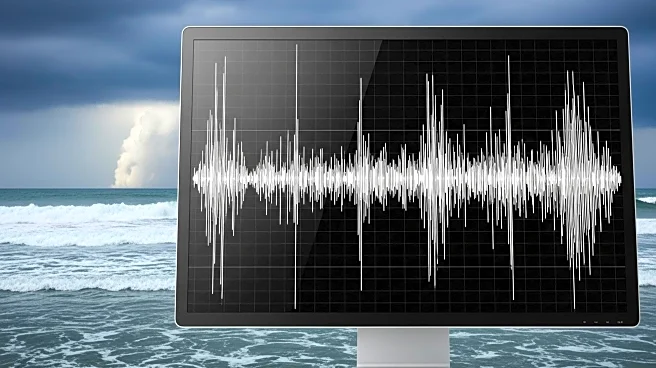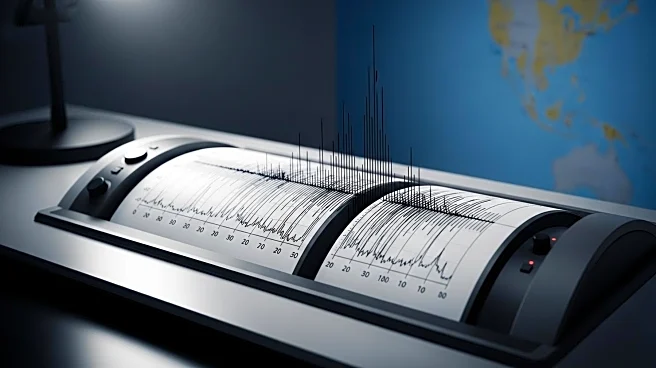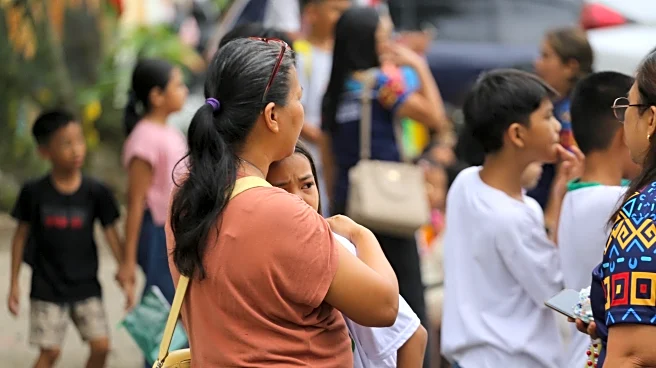What is the story about?
What's Happening?
A 7.4 magnitude earthquake struck the southeastern coast of the Philippines, prompting initial tsunami warnings. The earthquake was centered at sea, approximately 62 kilometers southeast of Manay town in Davao Oriental province. The Philippine Institute of Volcanology and Seismology (Phivolcs) reported potential damage and aftershocks, with the quake caused by movement in a fault at a shallow depth of 10 kilometers. President Ferdinand Marcos Jr. announced that damage assessments and rescue operations are underway. The Pacific Tsunami Warning Centre indicated possible hazardous waves within 300 kilometers of the epicenter, with waves up to 3 meters above normal tides expected on some Philippine coasts.
Why It's Important?
The Philippines is located on the Pacific 'Ring of Fire,' making it prone to seismic activity. This earthquake follows a recent 6.9 magnitude quake that resulted in significant casualties and displacement in Cebu province. The potential for tsunamis poses a threat to coastal communities, necessitating immediate evacuation and preparedness measures. The event underscores the ongoing challenges faced by the Philippines in managing natural disasters, impacting public safety, infrastructure, and economic stability.
What's Next?
Authorities are closely monitoring the situation, with rescue teams and relief operations prepared for deployment. Coastal communities have been advised to evacuate to higher ground. The government is expected to continue assessing the damage and coordinating with international organizations for disaster response. The potential for aftershocks remains, requiring ongoing vigilance and preparedness from residents and officials.
Beyond the Headlines
The frequent occurrence of natural disasters in the Philippines highlights the need for robust disaster management strategies and infrastructure resilience. The psychological impact on residents, who may experience disaster fatigue, is a concern that requires attention from mental health services. Long-term, the event may prompt discussions on improving building codes and emergency response systems.
AI Generated Content
Do you find this article useful?















